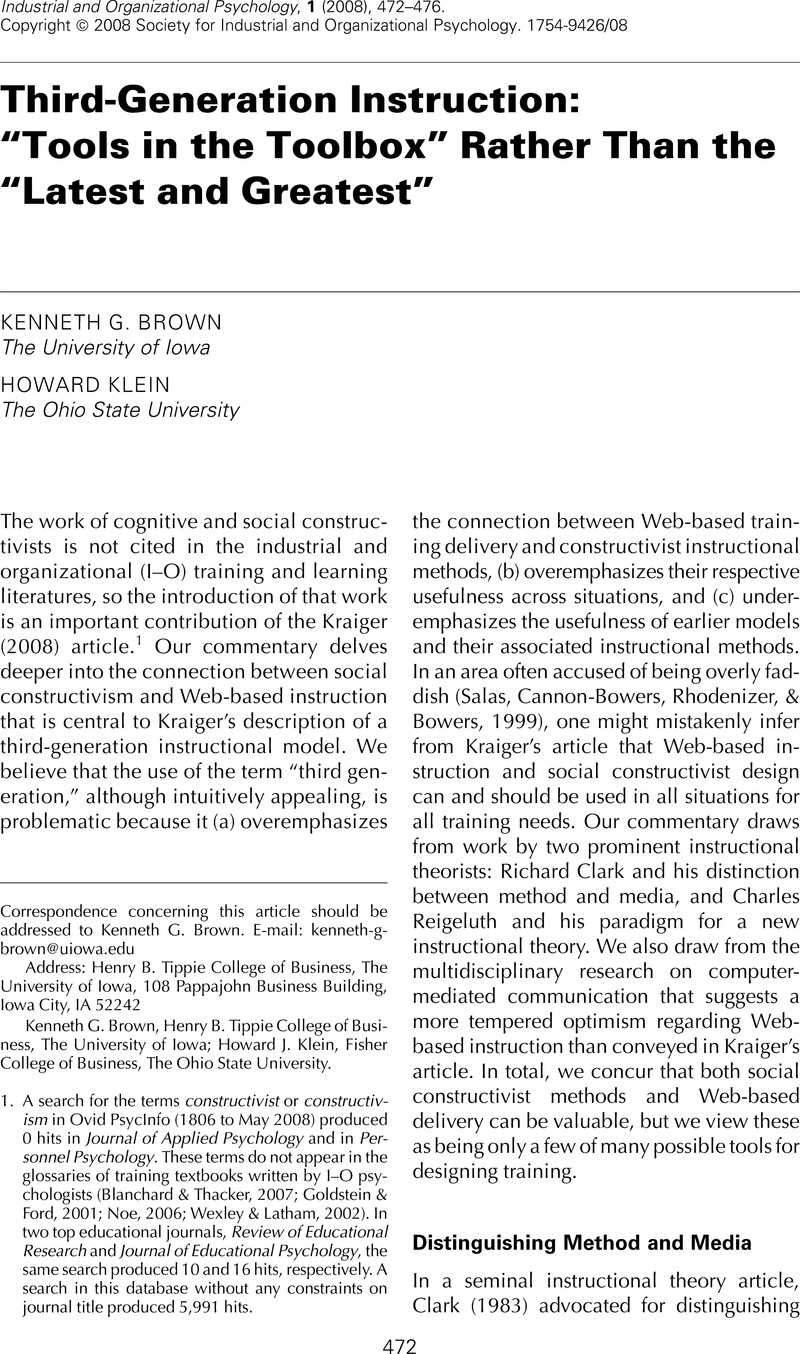Crossref Citations
This article has been cited by the following publications. This list is generated based on data provided by Crossref.
Kraiger, Kurt
2008.
Third-Generation Instructional Models: More About Guiding Development and Design Than Selecting Training Methods.
Industrial and Organizational Psychology,
Vol. 1,
Issue. 4,
p.
501.
Arbaugh, J.B.
Godfrey, Michael R.
Johnson, Marianne
Pollack, Birgit Leisen
Niendorf, Bruce
and
Wresch, William
2009.
Research in online and blended learning in the business disciplines: Key findings and possible future directions.
The Internet and Higher Education,
Vol. 12,
Issue. 2,
p.
71.
Granger, Benjamin P.
and
Levine, Edward L.
2010.
The perplexing role of learner control in e‐learning: will learning and transfer benefit or suffer?.
International Journal of Training and Development,
Vol. 14,
Issue. 3,
p.
180.
Brown, Kenneth G.
Howardson, Garett
and
Fisher, Sandra L.
2016.
Learner Control and e-Learning: Taking Stock and Moving Forward.
Annual Review of Organizational Psychology and Organizational Behavior,
Vol. 3,
Issue. 1,
p.
267.



